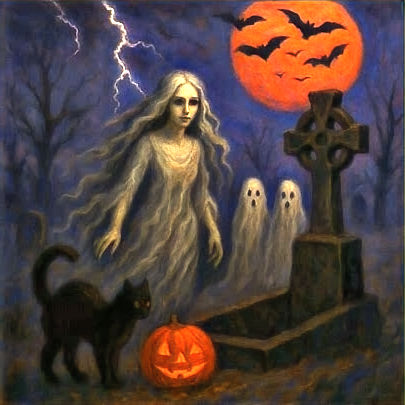Chamomile and Lavender in Medicine, Celtic Folklore, and Magic
- Christine Dorman

- Jan 19, 2020
- 3 min read
[NOTE: this post is written for entertainment purposes. None of the information in it is meant to be medical or lifestyle advice. As herbals can interfere with the actions of some medicines, check with your healthcare professional before using them. Also keep in mind that this post is primarily focused on folklore, not approved medical practices.]

Nature is an important part of Celtic culture. Using plants for medicine and magic is a centuries old tradition. Today’s post is about two of my favorite herbs: chamomile and lavender. There are few things more wonderful than the smell of lavender, or curling up with a cup of chamomile and mint tea. What a way to relax, de-stress, and just feel happy. Scientific studies have shown that both these plants decrease anxiety and aid in getting a good night’s sleep. But they have been proven to have additional health benefits, and they have quite a number of magical uses too, according to folklore.
Chamomile tea is, of course, renowned as a relaxant, but even from a scientific point of view, it has other uses. It has an anti-inflammatory effect and can help relieve gastric distress ranging from gas to nausea and diarrhea. Also, a compress soaked in chamomile tea may help ease the pain of achy joints and muscles. Chamomile has antioxidants which can contribute, according to some studies, to improving blood pressure and cholesterol levels. In addition, it has a pain-reducing and anti-spasmodic effect which explains why folk medicine recommends chamomile to ease menstrual cramps.
The plant has many more uses in folklore and magic. Drinking a tea made from chamomile and peppermint is said to help relieve headaches while chamomile mixed with rose will lift sadness. A tea of chamomile and lavender (which is easy to obtain commercially) will not only aid sleep but give one calming dreams. Folklore says drinking a cup of chamomile can give one strength through difficult times. A somewhat surprising use of chamomile tea is to let it cool, then wash your hands in it, especially if you’re about to go out gambling. Folklore claims this will bring you money. The herb is also said to attract money if you plant it in your garden. Even if it doesn’t attract money, it will attract butterflies which might help you forget financial woes, at least for a few moments.

Chamomile is good to plant even if you’re not trying to attract money (or butterflies). It is called the plant doctor and is believed to help heal sick plants growing it. This might be because chamomile is believed not only to ward off negative forces, but to transform them into positive energy. Some folk practices associated with this idea are to plant chamomile near the windows and doors of your house, and to sprinkle the tea around the perimeter the home as a barrier against magical mischief or maliciousness.
Lavender is considered a strong magical protector as well. In the Dark Ages, people carried it as a protection against the evil eye. After Christianity came to Celtic lands, crosses were made from lavender and hung over the front door to ward off evil and people attached sprigs of the plant to their clothes to keep themselves safe from malignant spirits.
Modern science has discovered that lavender seems to have antibacterial and anti-fungal effects. Perhaps this explains the folk practice of burning it in sick rooms as an anti-septic. (Or perhaps its soothing scent may just have had a calming effect on patients and caretakers).

Lavender was considered a favorite flower of the faeries and was believed to attract faeries. People made cakes with lavender in them and put them out as an offering in order to obtain a favor from faerie magic.
In folklore and magic, the herb is also associated with love and romance. Girls would place lavender flowers under their pillows at night to dream about their true love. When a marriage occurred, the herb was stuffed into the mattress of the newlywed’s bed as a way to promote marital harmony. In a strange contradiction, lavender was worn by young women to promote and safeguard their virtue but also was worn by married women in order to stir their husband's passion. It’s not surprising then that lavender was a prime ingredient in fertility charms.
Lavender’s main use in modern medicine is as an anxiety / stress-reducer and sleep aid (usually in aromatherapy form). Still, webmd.com cites a long list of possible uses for the herb, including reducing hot flashes in menopausal women and relieving post-surgical pain.
Regardless of what folklore says or modern medicine claims, one thing is certain: chamomile and lavender reduce stress and that’s always a good thing. So, raising a cup of tea, I wish you relaxation and peaceful dreams.

I hope you enjoyed the post. If you did, please LIKE it, SHARE it, and SUBSCRIBE to it. It’s FREE! Until next week, slan!





@tvlgbird That's a great tip! Thanks for sharing it and for reading and sharing the blog. I'm glad you enjoyed the post.
A drop of lavender oil on a cotton ball in my pillow case helps me drift off to sleep at night. Thanks for the info!